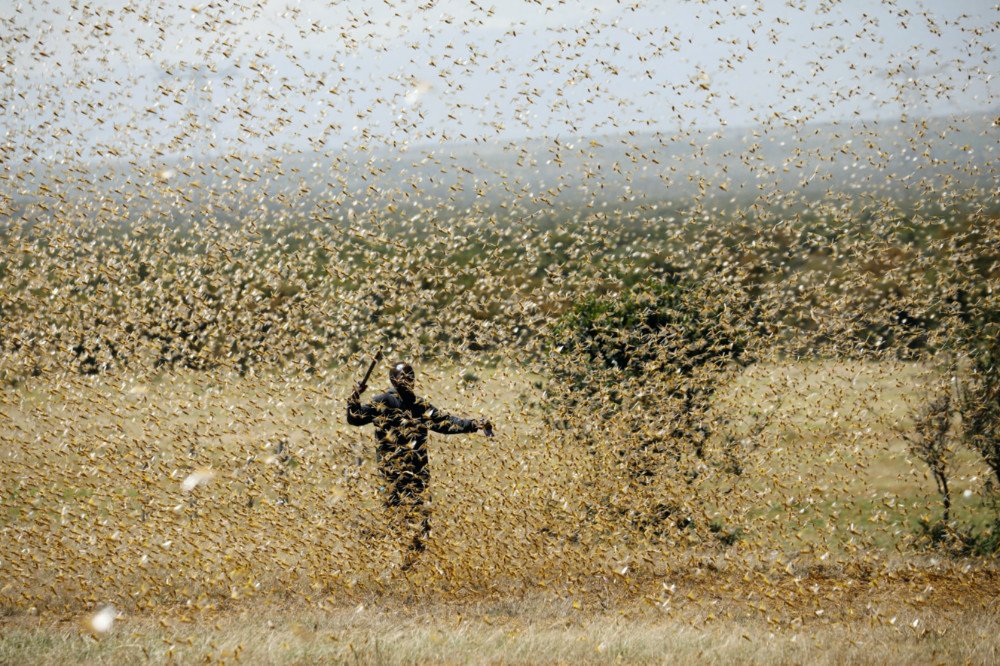In 2020, huge swarms of Biblical proportions struck the region, destroying food crops and animal pastures, and pushed hunger and economic hardship to new levels. And as though that is not enough, the United Nations warned in January, 2021, that a new invasion has started spreading in East Africa.
“We are concerned about their impact on the people’s food security,” said Nicta Luubale, a Ugandan who is the general secretary of the Organization of African Instituted Churches. “We are also concerned about the psychological impact they have on the farmer. This time, he is handling drought and last year there was too much rain. We are also talking COVID-19 to the farmer. It’s a pile up of many things.”

A man attempts to fend-off a swarm of desert locusts at a ranch near the town on Nanyuki in Laikipia county, Kenya, on 21st February, 2020. PICTURE: Reuters/Baz Ratner
Scientists have linked East Africa’s locust infestation to the unusual weather and climate conditions in East Africa – including widespread and heavy rains since October, 2019.
Luubale called for further investigation into linkages between the locust invasion and climate change. The cleric wants more information on the locusts given to communities: what they can do on their own regarding the insects, details of the pesticides’ effects, and the impacts of the chemicals in pesticides.
At the same time, the leader urged increased community education on climate change, how it affects the community and what the people can do.
“We have been ambiguous when talking about climate change. We need to be more clear so that communities can understand climate change and adaptation,” said Luubale.
The first wave of locusts landed in the region in December 2019, and multiplied into hundreds of billions. The swarms then spread quickly across the horn of Africa and in April-May, 2020, a second wave struck.
“The first wave came when most crops were mature and the damage was not severe. Now, the crops are too young and that poses a real threat to farmers,” said Peter Munya, Kenya cabinet secretary for agriculture.
African countries – including Ethiopia, Kenya, Sudan and Somalia – are hard hit by the locusts. Their invasion has resulted in the food insecurity of 35 million, a number which could rise to 38 million, if no urgent action is taken, according to the UN.
“The people in our area are nomadic pastoralists. Our fear is the locusts will wipe out the little remaining pasture and cause starvation,” said Anglican Bishop Daniel Qampicha Wario of Marsabit Diocese. “The food security in the area is bad. People planted and the crops withered when they were about to mature.”
This article was first published on the World Council of Churches’ website. Fredrick Nzwili is a freelance journalist based in Nairobi, Kenya.





